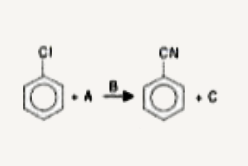Identify intensive property from the following
Volume
Mass
Enthalpy
Temperature
To identify the intensive property from the given options (volume, mass, enthalpy, and temperature), we can follow these steps:
1. Define Extensive and Intensive Properties:
- Extensive Properties: These properties depend on the amount of matter in a system. Examples include volume, mass, enthalpy, and internal energy.
- Intensive Properties: These properties do not depend on the amount of matter in a system. Examples include temperature, pressure, boiling point, and density.
2. Analyze Each Option:
- Volume: This is an extensive property because it changes with the amount of substance present.
- Mass: This is also an extensive property as it varies with the quantity of matter.
- Enthalpy: This is another extensive property since it depends on the size of the system.
- Temperature: This is an intensive property because it remains constant regardless of the amount of substance.
3. Conclusion:
- From the analysis, the only intensive property among the given options is temperature.
Final Answer:
The intensive property from the given options is temperature.
---
- Extensive Properties: These properties depend on the amount of matter in a system. Examples include volume, mass, enthalpy, and internal energy.
- Intensive Properties: These properties do not depend on the amount of matter in a system. Examples include temperature, pressure, boiling point, and density.
- Volume: This is an extensive property because it changes with the amount of substance present.
- Mass: This is also an extensive property as it varies with the quantity of matter.
- Enthalpy: This is another extensive property since it depends on the size of the system.
- Temperature: This is an intensive property because it remains constant regardless of the amount of substance.
- From the analysis, the only intensive property among the given options is temperature.
The intensive property from the given options is temperature.
Topper's Solved these Questions
- THERMODYNAMICSBOOK - CENGAGE CHEMISTRY ENGLISHCHAPTER - THERMODYNAMICSEXERCISE - Exercise
1 Videos
- THERMODYNAMICSBOOK - CENGAGE CHEMISTRY ENGLISHCHAPTER - THERMODYNAMICSEXERCISE - Ex 6.1
26 Videos
- STOICHIOMETRYBOOK - CENGAGE CHEMISTRY ENGLISHCHAPTER - STOICHIOMETRYEXERCISE - Archives Subjective
33 Videos
Similar Questions
Knowledge Check
Identify the false statement from the following
AWork-energy theorem is not independent of Newton's second lawBWork-energy theorem holds in all inertial frames.CWork done by friction over a closed path is zero.DWork done is a scalar quantity
Intensive property is :-
View SolutionIdentify from the following.

View SolutionIdentify the anabolic process from the following
View SolutionChoose the intensive property from the options given below
View SolutionIdentify the wrong statement from the following
View SolutionIdentify the correct match from the following
View SolutionWith respect to angiosperms, identify the incorrect pair from the following
View Solution
